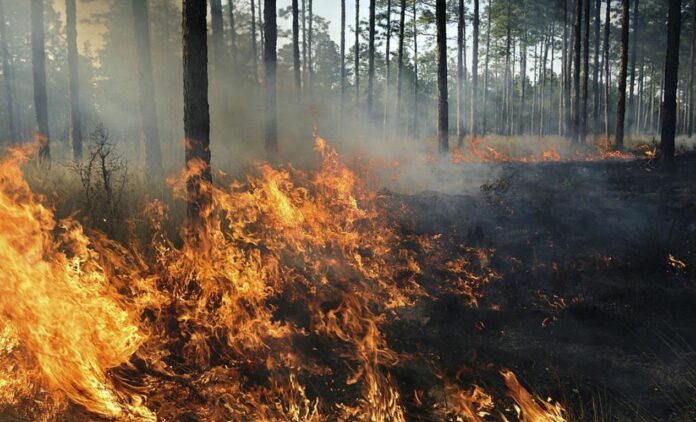Wildfires Are Catastrophically Destructive, But How Microbes Rise Again After Wildfire’s Wrath, This is What a New Study Says
Wildfires don’t just transform the landscape, but they also impact every living organism within and around the burn zone, right down to the tiniest microbes.
Gaining insights into the evolutionary trajectory of these microbial communities post-fire is essential for predicting their response to significant ecological shifts.
This week, a paper in mSystems highlighted the pivotal role of dispersal, via elements like wind and rain, in determining the microbial landscape after a severe fire event.
The study, carried out by the University of California, Irvine, documented the year-long resurgence of bacterial and fungal populations within the debris of burned fields.
Their observations indicated seasonal fluctuations in microbial patterns in tandem with plant regrowth, emphasizing that their dispersal mainly drove this revival.
The frequency and magnitude of wildfires, a major ecological perturbation, have surged in recent times.
“We know with climate change and human activity we’re disturbing our ecosystems more and more. Microbes, especially those in the surface soil, perform a number of really key ecosystem processes, like carbon and nitrogen cycling,” commented Kristin Barbour, the principal author and doctoral candidate from the University of California, Irvine.
She emphasized the crucial role of surface-soil microbes in maintaining key ecological cycles, including those of carbon and nitrogen. They are responsible for decomposing fallen and decaying plant debris in various terrains.
Interestingly, Barbour initially aimed to delve into microbial dispersal during drought periods. However, a sudden wildfire near Irvine’s Loma Ridge reshaped her research direction. Seeing potential in this unexpected event, she remarked, “We wanted to take advantage of this disturbance, especially since wildfire is becoming more frequent in many parts of the world.”
Wildfires’ extreme temperatures have a profound effect on the chemical balance of the debris layer, home to numerous microbes, leading to a realignment within the microbial spectrum of the ecosystem.
To understand this phenomenon, the team examined two distinct biomes impacted by the fire – a dry grassland and a coastal sage shrubland. Their methodology involved four types of dispersal pouches. The initial type, filled with charred debris, was designed to be permeable to microbes. In contrast, the second type, a control, was impermeable. The third variety contained glass slides within permeable pouches to capture migrating microbes, and the last control version comprised sealed pouches with slides.
Over the ensuing year, the research group retrieved these pouches on five occasions from both locations, subsequently analyzing the microbial content on the debris. They observed that the two terrains manifested distinct microbial dispersal behaviors, indicating a strong environmental influence on these patterns.
“Which hurts our ability to make generalized statements,” noted Barbour.
Certain patterns were consistently observed. Predominantly, airborne dispersal was the chief conduit for microbial penetration into the topsoil, accounting for 34% of bacteria and 42% of fungi. Furthermore, in the initial months post-blaze, prior to plant resurgence, the deeper soil layers beneath the leaf debris seemed to be the main source of bacterial introduction.
Barbour emphasized that exploring the mobility of microbes in the environment is a nascent research field. However, it’s intricately linked to broader discussions on how significant upheavals influence our surroundings.
“There’s a lot of exciting work being done right now, looking at dispersal and at microbial communities out in the environment,” she concluded.
Image Credit: Getty
